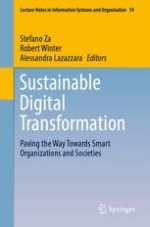Digital transformation is one of the most discussed topics today because of its impact on society and the economy. This book explores how digital transformation can be made sustainable and how sustainability strategies can be integrated into the different phases of digital transformation development. It shows how ICT experts, managers, and policy makers can contribute to a sustainable digital transformation by examining the technological, organizational, and societal implications. The book is based on a selection of best papers on this topic presented at the annual conference of the Italian Chapter of AIS in Trento, Italy, in October 2021.
The plurality of views offered makes the book particularly relevant for scholars, companies, and organizations in the public sector.
